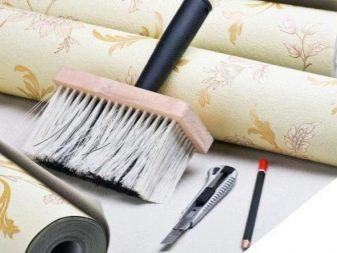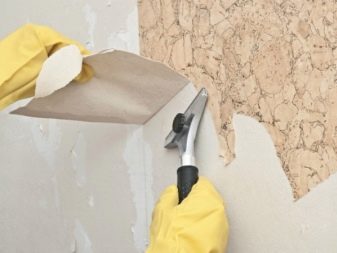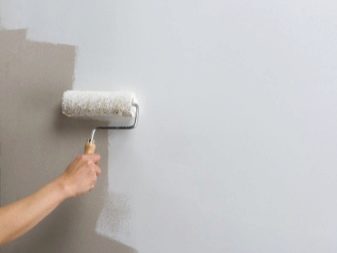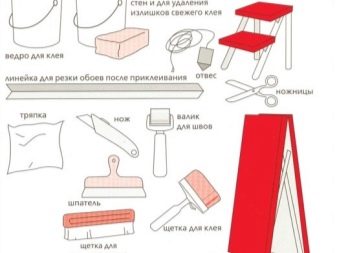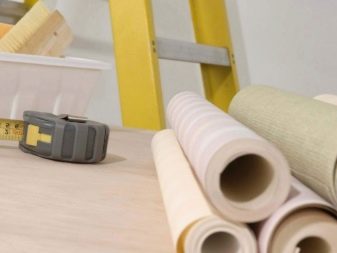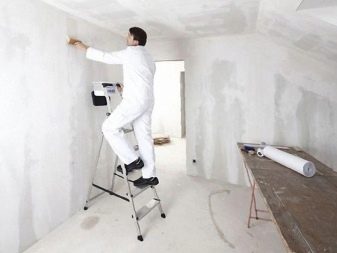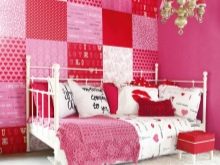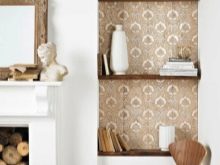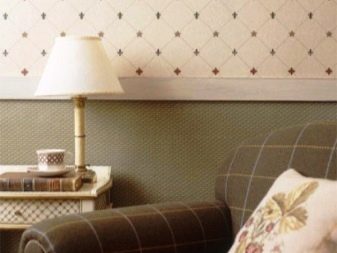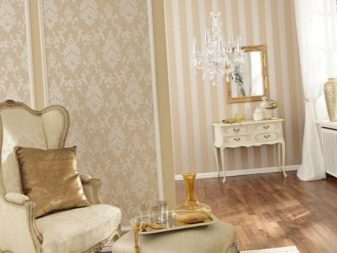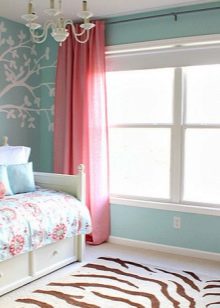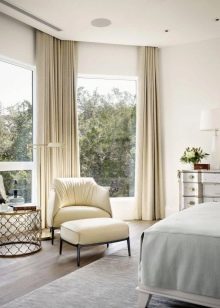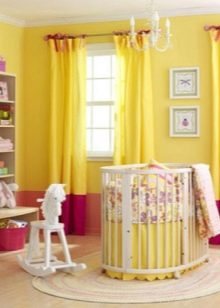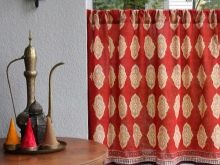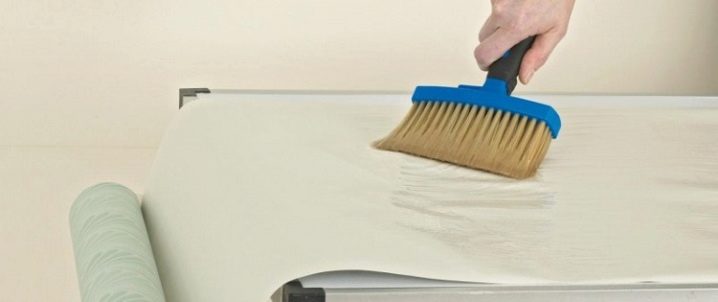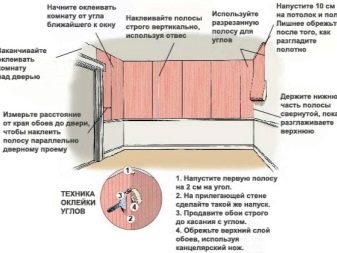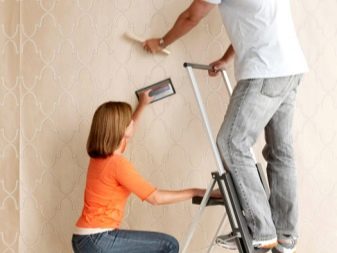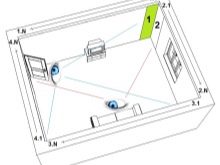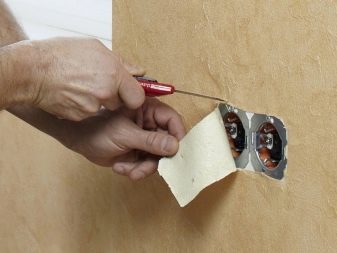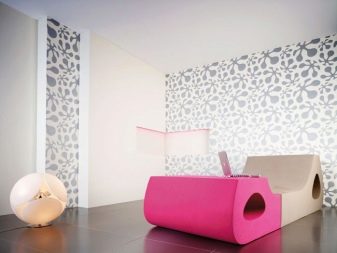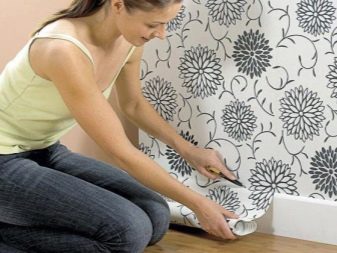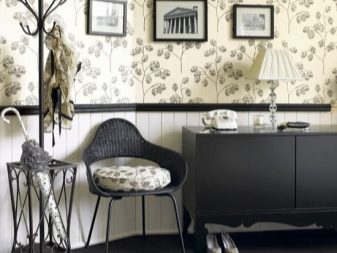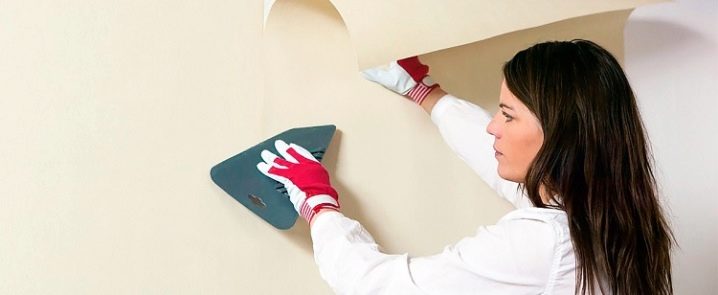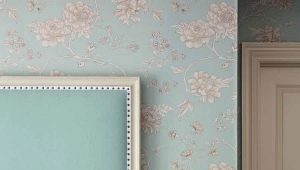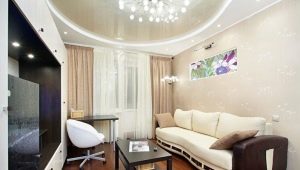Where to start wallpaper glue?
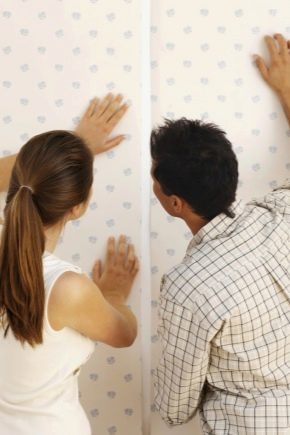
They start thinking about cosmetic repairs in two cases: when the wall covering has worn out or when it is pretty tired. Wallpapering follows its rules. To understand where to start wallpaper glueing, you need to know the process technique and the texture of a particular material.
What do you need?
Walls upgrade is easy. This requires:
- have the simplest tools;
- purchase building material (wallpaper);
- read the rules of work;
- full compliance with pasting instructions.
Preparatory work
At the first stage, you should deal with the treatment of walls. An old coating is removed from them so that not a single piece remains. If a part of the detachable cloth is firmly attached, it is moistened with water, and after a few minutes it is removed with a spatula.If there are cracks, holes or protrusions, bring the surface to a flat surface. To do this, the bumps are cut down, and the grooves and cracks are filled.
An even wall is primed with a deep penetration primer and dried. It can be treated with a solution against fungus and mold. Now it is ready for final processing. It remains to perform measurements, determine the number of rolls required and go after them to the store building materials.
Tools and material
When a buyer doubts his own calculations of the amount of wallpaper required for repair, he should contact a specialist. The consultants of the store will carry out the correct calculation, help you choose the right glue, and gently advise you to buy related materials (brushes and rollers). Brushes are useful for applying adhesive, and rollers are convenient for smoothing the fabric on the wall.
Do not be surprised if the seller’s calculations exceed your own. In a roll, usually 10 meters of linen. With a height of 2.7 meters from each roll, only 3 full-fledged lanes will turn out. Inexperienced buyers do not always take into account details that are well known to professionals.
Do not think that you are cheated, agree with the seller. Otherwise, you will have to buy more raw materials. And the necessary material with a beautiful pattern by this time can be sold out.
Tools and inventory
To work will require:
- reliable stepladder;
- roulette at 3 - 5 meters;
- pencil and long ruler for marking;
- plumb line to determine the vertical;
- a sharp knife for cutting the roll into pieces;
- scissors for cutting complex shapes;
- clean sponges or cloths to remove excess adhesive;
- bucket and warm water for mixing the solution.
If the room cannot be freed from the furniture completely, have to stock up the film to protect the remaining items from damage. Glue can damage the flooring, so you should also ensure its safety. Do not forget to wear comfortable clothes and a hat so that nothing interferes with the creative process.
Repair is better to start after the end of the heating season. At this time, a uniform drying of the wallpaper is ensured. And the length of daylight allows you to do without facing artificially when facing.
Combine wallpaper
The wall covering combined from different components on a coloring or invoice, creates unique design. With the help of different drawings in the room they conduct spectacular zoning. It can be performed horizontally, vertically, in the form of inserts. Spectacularly made zoning niches, frames of fireplaces and other separately standing furniture look impressive. Zoning allows you to divide the room into several separate corners. By combining the wall decoration of the room, you can visually resize the space. This is true for elongated rooms, rooms of small area, rooms with low ceilings.
When combining often use two types of roll materials. To a height of about 1.2-1.5 meters from the floor, darker canvases are pasted, the lighter ones go higher. The texture of the canvas can vary from more dense below to light at the top. Apply the wallpaper can be pre-made marking the bottom or top. The joints of different types are securely hidden by suitable moldings.
Wallpaper in different rooms
You need to choose the material not only according to the pattern and cost, but also according to the physical characteristics.For bedrooms and children's rooms require "breathable" wallpaper. The most suitable for such premises will be a paper look. The only negative - the paper is short-lived. In a maximum of five years, repairs will have to be done anew. Textile wallpapers are not harmful for health, although they are much more expensive.
For the living room is to choose silk screening. The glittering surface will add respectability to the room. The color must match the installed furniture in the room. Large drawing for the living room is not recommended. Do not pick too bright colors. Calm tones create greater comfort.
Vinyl wallpapers based on non-woven fabric are highly durable, resistant to abrasion, have a long service life. Since they are easy to clean from various stains and stains, they are great for corridors and kitchens.
Glueing rules
Before you start to glue the wallpaper, you need to familiarize yourself with the rules. An instruction sheet is attached to each roll. From it you will learn about the right glue, impregnation time and other nuances of working with a particular type of material. Do not depart from the time intended for impregnation.Extra minutes of being in a lubricated condition can result in drying of the glue, or excessive softening of the material. This rule is especially important for paper and vinyl paper wallpapers.
Uniform rules for pasting does not exist. It all depends on the type of material, the room in which you plan to update the walls. For example, in the rooms and kitchens there are windows, in the hallways and corridors only the doors. Adhesive liquid is applied on paper and vinyl wallpaper, and under thick non-woven sheets glue process the walls.
No matter where the repair is performed, whatever the material, the process always begins with the rolls being rolled out on a flat surface, marked and cut to size with a small allowance. You do not need to forget about the figure. In some cases, it is necessary to check the coincidence of the pattern for each successive segments. You can cut as many whole pieces at a time as it will go on one solid wall. In the locations of windows, doorways, heating devices and other deviations from the main surface, the wallpaper is cut out after marking in place. The first sheet should go strictly vertically, for this you can choose a natural landmark, such as angle, window or door jamb.The conformity of the slope of the vertical is checked by a plumb line.
Pasting is performed from top to bottom. It is more convenient to do it together. The first is on the stepladder, lifts the sheet to the top of the wall, the second provides a vertical and docking pattern. On the wall, the glued piece is smoothed with a roller or a clean rag, expelling air bubbles from under it. This operation is performed from the middle of the sheet to the edges. Excess adhesive is carefully removed with a dry sponge or cloth.
Different variants
Depending on the type of connection of the wallpaper, two options are possible: butt and overlap. The second case is rare. But, if it takes place, the question of the beginning of the reference disappears by itself. Pasting starts from the window on both sides, diverging to the right and left. Each next part is a little on the previous one.
With the docking variant, sticking can be started from the side of the window or from the doorway, angle. It is important to ensure that the room has a flawless view, taking into account the direction of light. The finish will become one if there are no discrepancies in the design, cracks and overlaps between the touching bands. A good result is achieved with consistent pasting in one direction.
With natural light flaws and flaws are clearly visible. Timely identified, they are easily eliminated. Therefore, work should be done in the daytime. In cloudy weather, you will need to turn on the backlight. Only in this way will it be possible to avoid gaps, deviations from the vertical, and a shift in the pattern.
What's best?
When choosing a starting position, you need to focus on the figure. From the right choice will depend on the end result, the aesthetic appearance of the room. Only in rare cases, the perimeter of the room will contain a multiple of the wallpaper sheets. The last piece always has to be cut to the width. because it will be right to start work from the most inconspicuous place to hide a mismatched pattern.
You should not start pasting from the angle in which it is not planned to put high furniture. If it is decided to put a closet with entresol in the corner, it is advisable to start with it. Furniture covert imperfection last connection. If the room has a wide window, the first sheet can be fixed in the corner farthest from the entrance. This place will not be evident, the attention of those present will be directed to the largest object in the room, that is, to the window.
Features of pasting corners
Cornering should be given special attention. These sites often do not differ in the accuracy of geometric shapes. The angle between the two walls in panel, brick and block houses is not the same at the floor and ceiling. In this case, the glued sheet may form wrinkles.
Wallpapers in problem areas stick exactly if:
- on the “bare” side, draw a vertical line and stick a sheet along this guide;
- from one wall to another will move no more than 3-4 centimeters of canvas;
- smear the recess with glue to better fit it and press the edge thoroughly;
- make undercuts in places of formation of small folds.
Difficult places
In the walls of the rooms laid electrical wires. On the surface, they are suitable for outlets and switches. At the time of repair, both are removed and the wires are carefully insulated. Sheets are glued to the walls without cutouts for wiring. Access to communications is obtained by cutting out the required windows after the glue has dried. First, the incision is made with a knife crosswise, then with scissors adjusted to the desired shape and size.
Speakers corners are recommended to cover with plastic corners, selected in tone with the wallpaper.So the wallpaper will not tear, and the docking seam will disappear if it gets to this place.
Recommendations
If you have firmly decided to do without master finishers, remember:
- repairs are not done in a hurry;
- measurements and calculations will save material costs;
- thorough preparation will relieve from downtime and the formation of marriage;
- do not experiment and deviate from the instructions attached to the wallpaper and glue;
- material consumption is less, and work is easier with small patterns on the wallpaper;
- in the rooms, "looking" to the north, wallpaper of warm tones is preferable;
- to mask the irregularities of the walls will help dense wallpaper with a pronounced embossing;
- Verticality should be checked periodically during operation.
- the room can not be ventilated day after the repair.
In the next video, a popular construction blogger will share his professional secrets that will come in handy when wallpapering.

